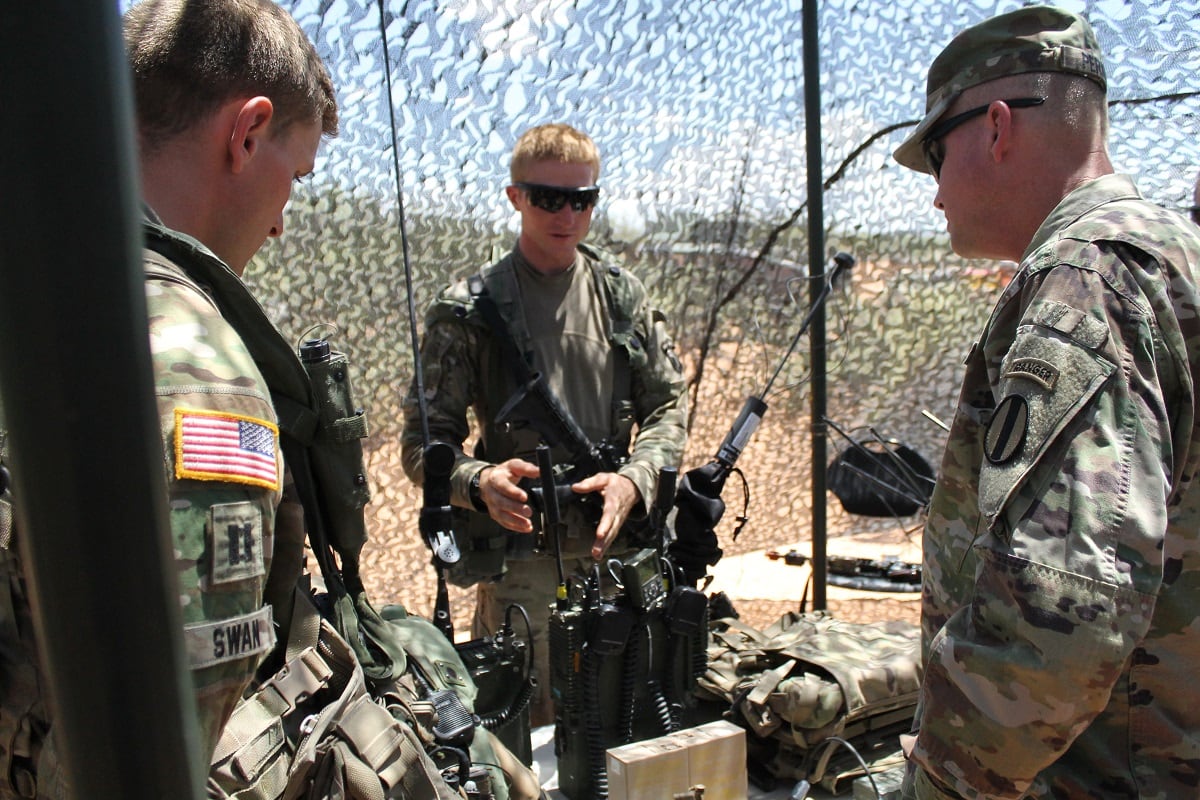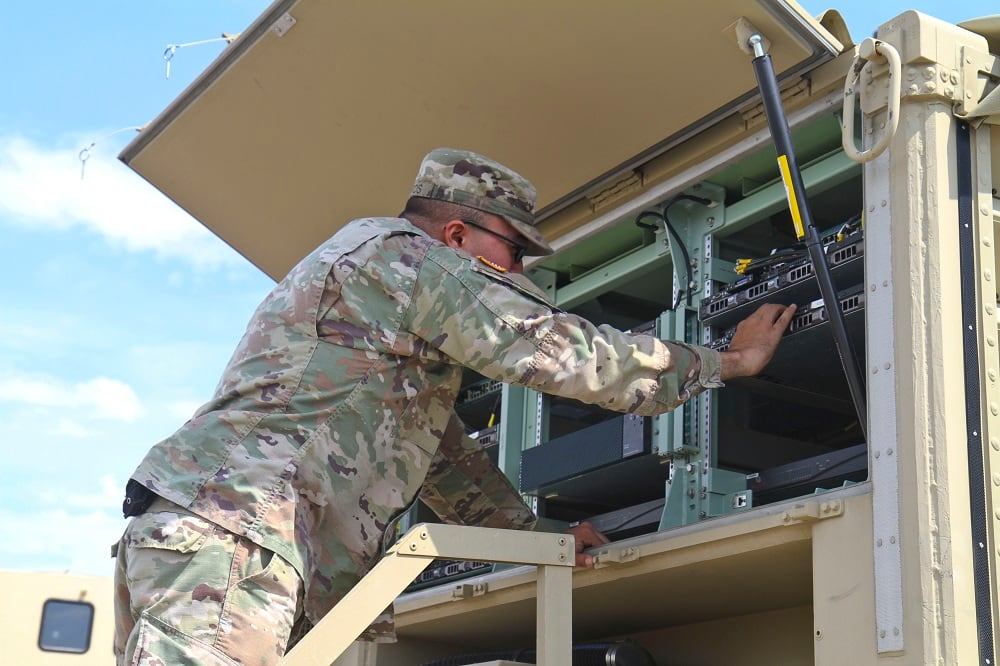The Army has a slew of ongoing efforts to modernize its tactical network, including a focus on a pilot unit that moves quickly through the world and spectrum to tailor critical communications systems support.
The Expeditionary Signal Battalion-Enhanced (ESB-E) supports units that don’t have organic comms capabilities. These could include military intelligence battalions, chemical battalions, engineering battalions or air defense artillery branches.
RELATED

The ESB-E can also augment regular Army units, as a renewed focus on great powers requires all units to be much more mobile and expeditionary. What that means for signal battalions is their gear will have to be easily carried and set up to enable them to maneuver with units in a rapid manner.
“The Army’s transitioned to focusing on data environment and near-peer threat. The need for those logistical tails and for the enablers to move rapidly has increased, which is part of the demand signal that has gotten us away from” the Warfighter Information Network-Tactical of the past, Maj. Jeff Forry, S-3 50th Expeditionary Signal Battalion, told C4ISRNET during a demo of Army network modernization efforts at Fort Myer June 18.
Forry said they’ve provided much more modular and scalable capabilities than the Humvee-mounted, satellite transportable terminal-based capabilities of year’s past.
In March 2018, the Army authorized the beginning of the ESB-E pilot, which is intended to create more mobile and agile kits for signal brigades.
As part of the pilot, three companies under the battalion have been outfitted with capabilities from three vendors. This includes basebands — made by DTech, PacStar and Klas Telecom — with accompanying Tampa Microwave or L3 satellite terminal dishes of varying diameter depending on the users the unit needs to accommodate.
Overall, the battalion has packages to provide communications for a variety of users.
“When I plan a mission, less than 20 users, I’d start looking at small [packages] … when we start pulling 20 up to 48 I’m looking at medium, and then after that we’d either use multiple mediums or start looking at the [large] package,” Forry said.
The modularity of the kits mean, in many cases, just adding more users merely involves just sliding a small router into the baseband and utilizing a slightly larger satellite terminal. This is easier than the old WIN-T way of doing things where teams needed to bring full transit cases to add more users and bandwidth.
One user noted that the modularity of the kit allows teams to mix and match based on the requirement. For example, if they only need connectivity to the Pentagon’s secret network, as opposed to the unclassified network, they only need to bring those services with them.
During a recent event at Dugway Proving Grounds, members from the signal battalion supported a chemical brigade, which had to get in and out of affected areas very quickly. The team took a small package and was able to get communication up in less than 10 minutes. They were onsite for 20 minutes, packed up and moved to the next site.
The Army is continuing to utilize training events, combat training center rotations and exercises such as Saber Guardian in Europe to evaluate systems within the pilot program and execute operational tests for the gear.
“The different approach we took for this prototype that we’re doing is we didn’t go set off a dedicated unit to do an operational test,” Col. Greg Coile, project manager for tactical networks at Program Executive Office Command, Control, Communications-Tactical, said. “Their operational test is when they go to Saber Guardian, when they go do the operational support, that is how we’re testing and ... we use that user feedback going forward.”
Coile added that this ongoing experimentation also allows units to get more repetitions as opposed to the old way of doing things, where the unit would get the equipment two weeks ahead of an operational test at something like the Network Integration Evaluation. Now units get an entire year with the equipment, which means the value of feedback is much higher, Coile said.
The capabilities for the ESB-E unit will be part of the Army’s first delivery of capability in 2021 for its network modernization the service is calling capability set 2021.
RELATED

Coile said the pilot will run until September, after which the Army will begin to make decisions on down-selecting vendors and outfitting actual units with the kits. The plan is to have every unit have the same equipment, as opposed to three companies currently outfitted with different vendor equipment for the prototype.
A battalion will be complete in 2019, Coile said, and they are funded for three more in 2020. Moreover, they’ll buy more in late 2020 to early 2021 and field those three.
In 2021 there is funding for another three units, but the Army leadership will have to make a decision on what units get that.
Mark Pomerleau is a reporter for C4ISRNET, covering information warfare and cyberspace.








